Trading Strategies
On Alkimiya, one can take a long or short position based on one’s view on the impact of the on-chain events. Simply put, if you think an event(s) will cause significant network congestion, go long and if you think the event(s) are overhyped or the overall usage will slow down, go short.
However, trading on Alkimiya is more than that. Parameters such as entry price and size affect your orders and as a result, your PnL.
Before diving in, it’s imperative to understand the parameters/data that affect trading on Alkimiya. Make sure to check out our and Glossary for unfamiliar terms.
1. Check the Total Base Revenue
Total Base RevenueThis is the underlying index. It is the cumulative of the Base L2 Index across a pool’s duration and is updated daily at 3am UTC.
The settlement of this index is based on the final Base Revenue on the last day. In essence, when trading, keep in mind the question: “What will the cumulative Base Revenue be at the end of this pool?”.
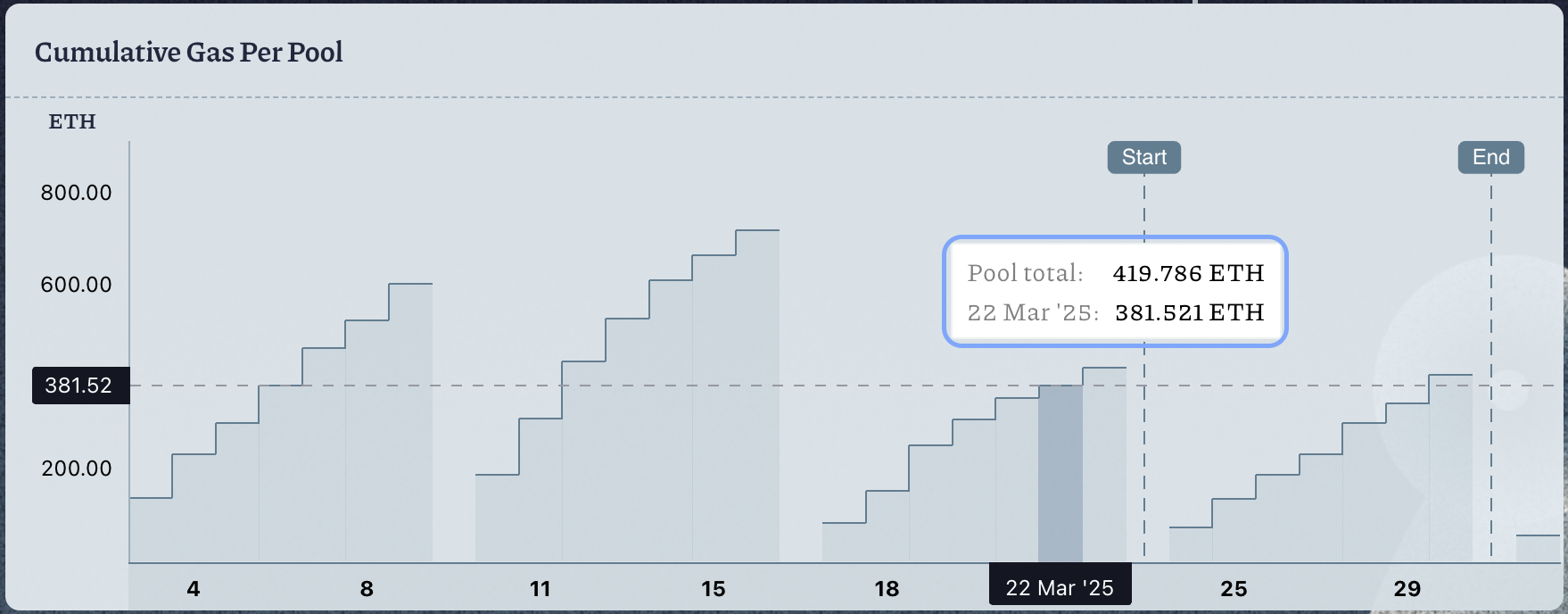
Cumulative Gas per Pool, Pool Total
Resources
2. Check the live charts on Alkimiya
There are 2 charts:
-
Cumulative Gas per Pool
- This chart displays the daily movement of Base Revenue from pool to pool
- Since this market tracks the cumulative instead of the spot revenue, it's a closer visualization of where the final Base Revenue might end up at
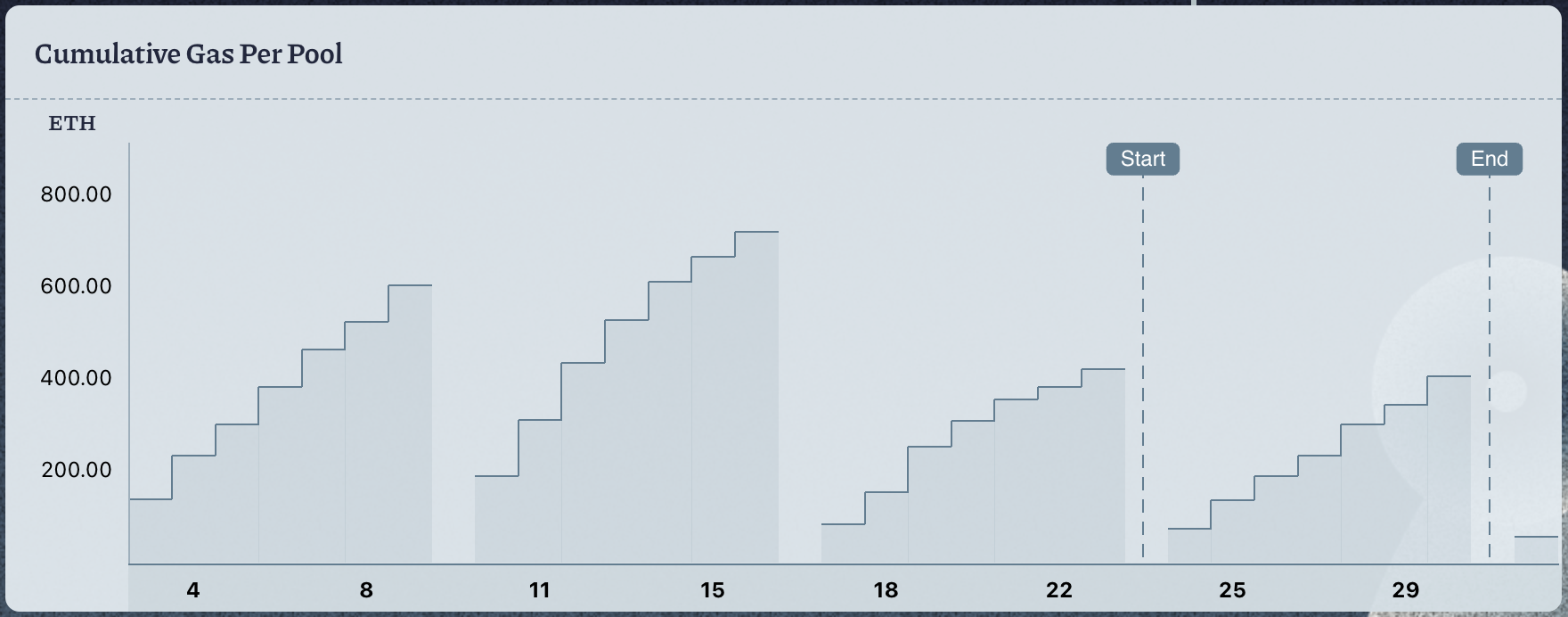
-
Base Total Gas Spent
- This chart displays the hourly, daily, and weekly movement and volatility of Base Revenue
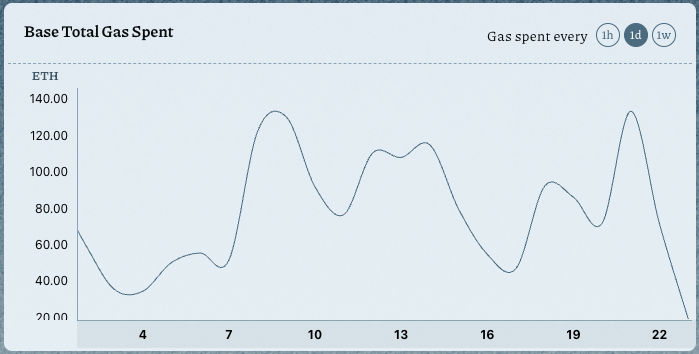
3) Check 'Open Orders' and 'Trade History' in the orderbook
On ‘Open Orders’, these are the available orders you can pick from within a pool. They are made by other traders on Alkimiya. Categorised under Buy and Sell, you can choose to fill a Long order/s or a Short order/s respectively.
On ‘Trade History’, these are the orders that were made and filled by traders on Alkimiya.
Using these two sections, gain insight on the level of bullishness or bearishness of other traders.
Open Orders
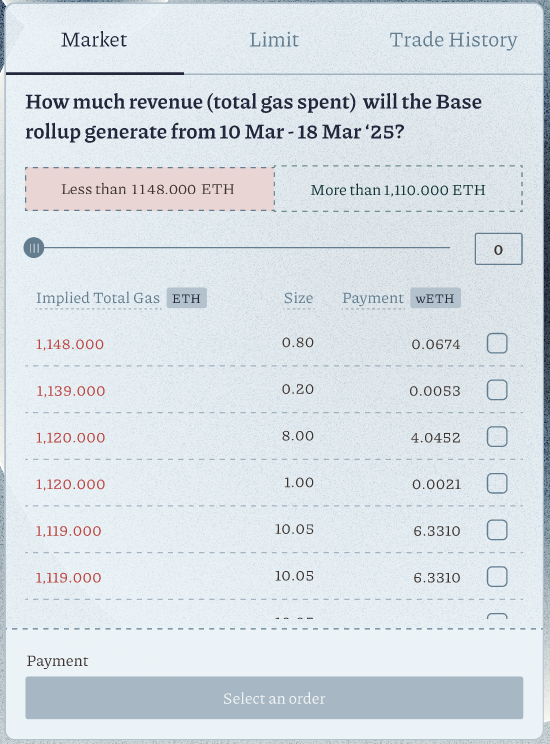
Open Orders
Trade History
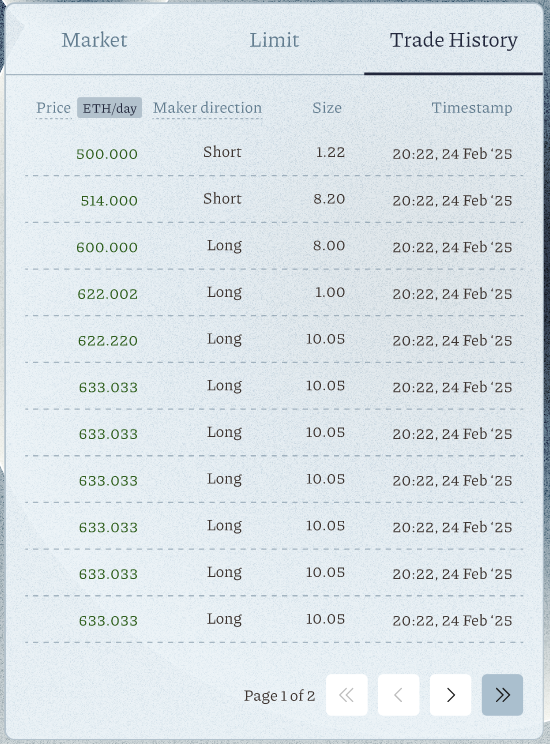
Trade History
Identifying good orders can get confusing, but it’s not impossible. Before scrutinizing the available orders, consider the decisions you’ve made prior and your risk appetite.
Resources
4. Decide on a direction you want to take
There are only 2 directions to choose from - Long or Short.
The general rule of thumb is:
For Long orders, if the cumulative Total Gas Spent lands above your order’s price, you profit the difference.
For Short orders, if the cumulative Total Gas Spent lands below your order’s price, you profit the difference.
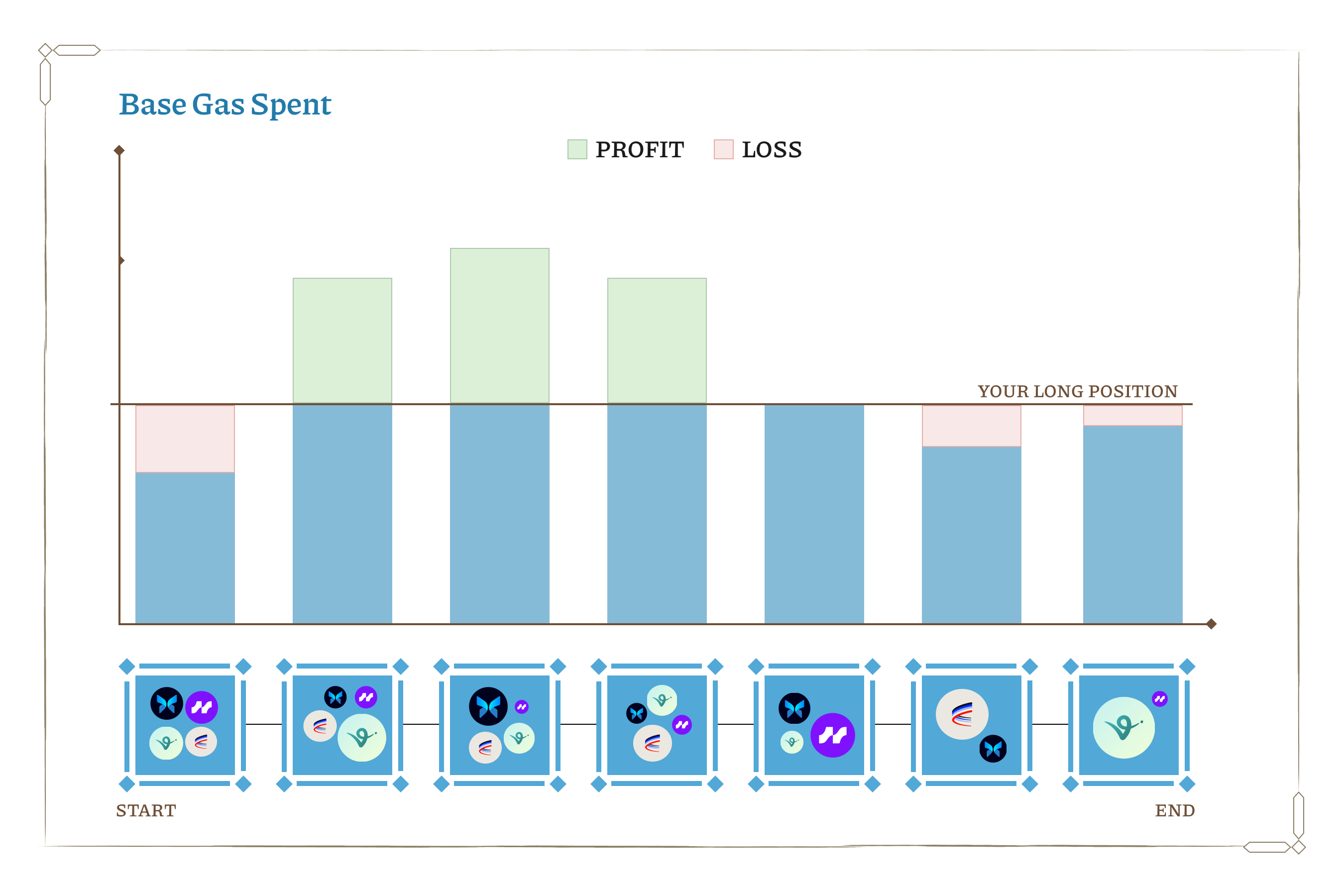
Long Order PnL Visualization
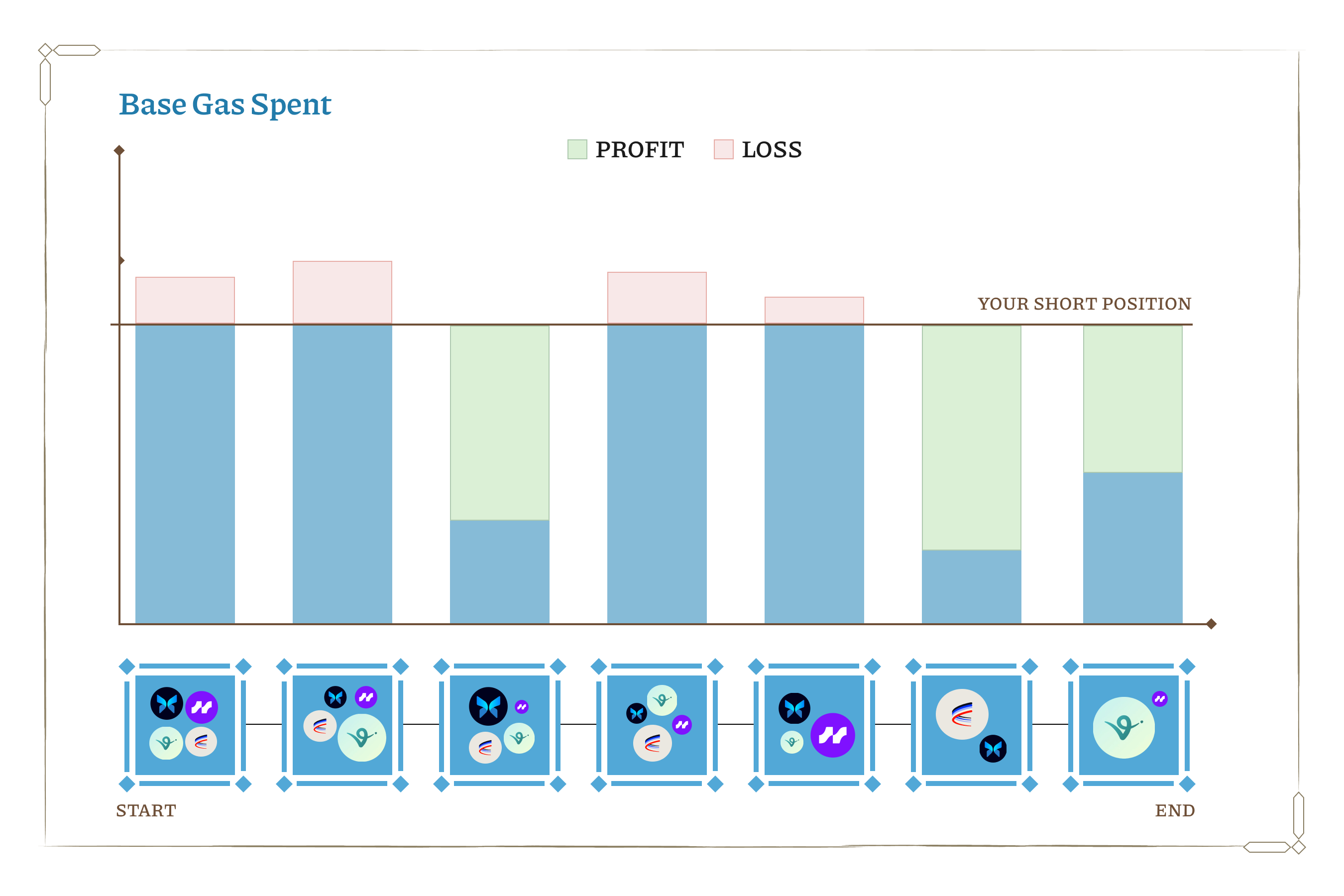
Short Order PnL Visualization
If you've decided to Long
- Navigate to the Long orderbook and compare the available
Implied Total GasandTotal Base Revenue
The aim here is to:- Select an order with a lower entry price than the index
i.e.Implied Total Gas<Total Gas Spent; or - Select an order with an entry price that is acceptable to you
i.e.Implied Total Gas< your expectedTotal Gas Spent
- Select an order with a lower entry price than the index
- Yay, you found a good order! But what is your risk appetite?
Sizeis the representation of your risk appetite. The larger the size, the riskier you want to be. However, if you have confidence in the order, go ahead and fill it!
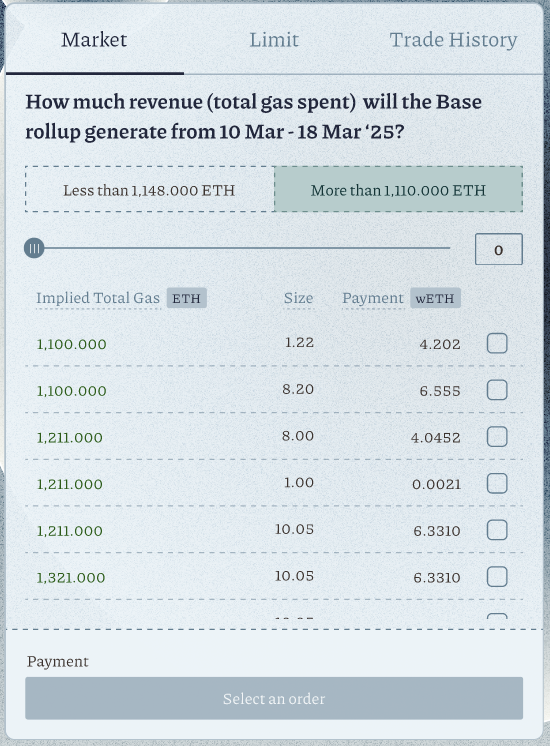
Long Orderbook
If you've decided to Short
- Navigate to the Short orderbook and compare the available
Implied Total GasandTotal Gas Spent
The aim here is to:- Select an order with a higher entry price than the index
i.e.Implied Total Gas>Total Gas Spent; or - Select an order with an entry price that is acceptable to you
i.e.Implied Total Gas> your expectedTotal Gas Spent
- Select an order with a higher entry price than the index
- Yay, you found a good order - go ahead and fill it!
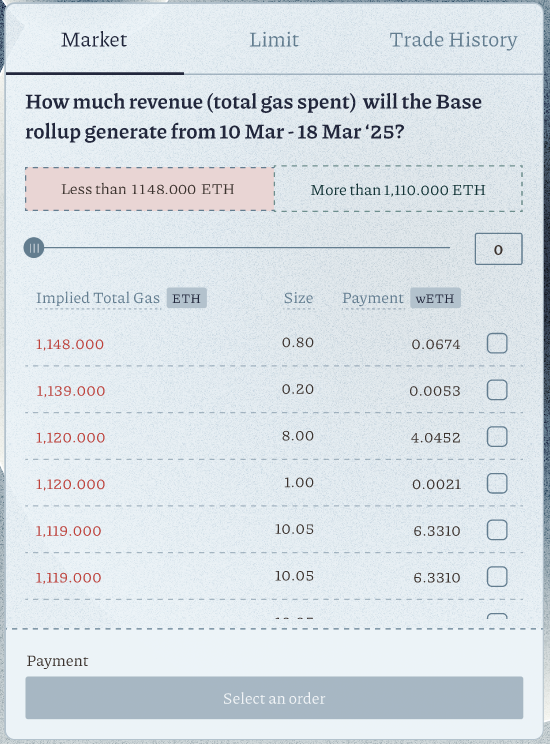
Short Orderbook
6. Create your own order
If you did not manage to find a good order, you can create your own order. Here, you have full control over the Implied Total Gas, size, and expiration. However, it is not without its limitations.
Custom orders are created and placed on the orderbook for other traders to fill. If it is not filled before its expiration, the order will be removed from the book.
To ensure that the custom order gets filled before its expiration, it needs to be competitive within the orderbook.
Thus, before creating an order, it is important to get a feel of the market sentiment.
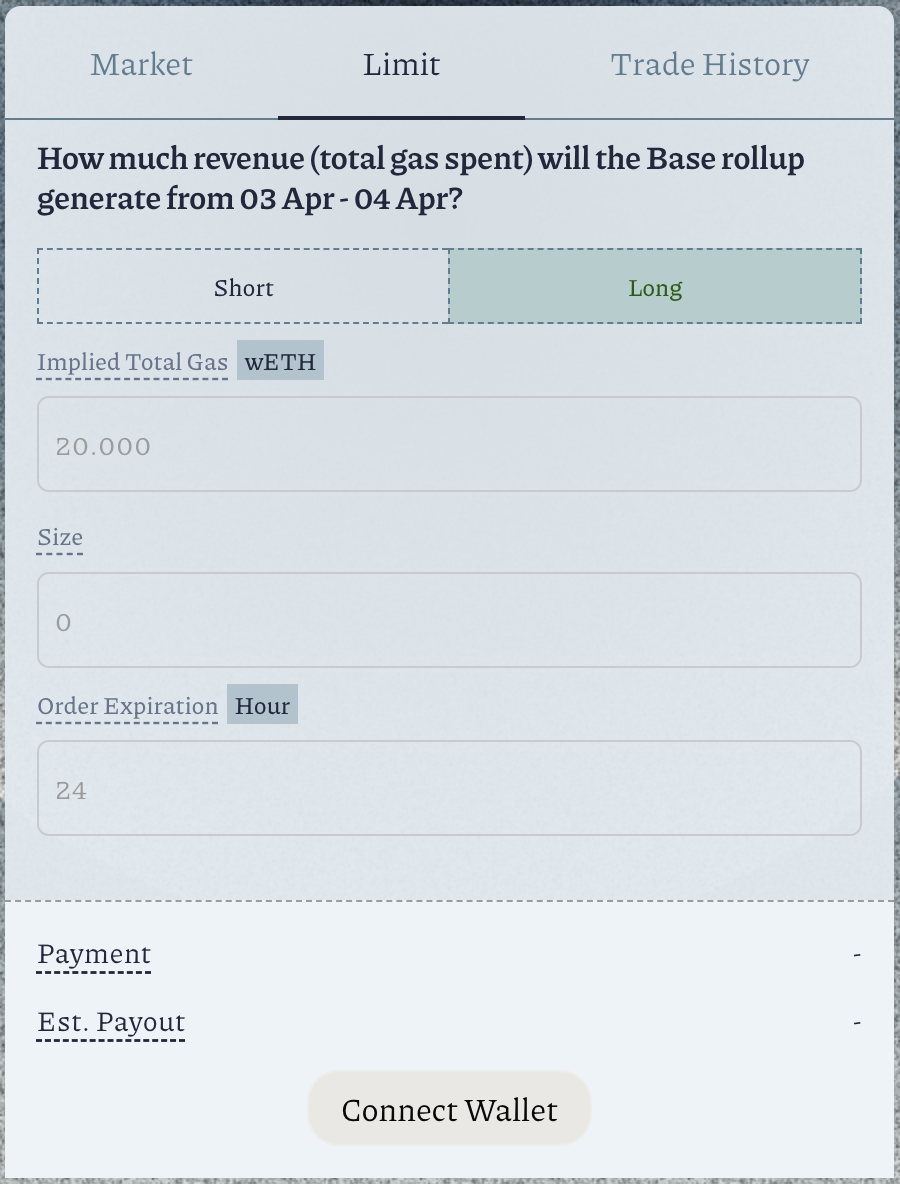
Limit Order
Implied Total Gas
The aim is to have your order at the top of the orderbook -> check the Best bid/ask
Best Bid: This is the best Short order in the orderbook
Best Ask: This is the best Long order in the orderbook
These values, when compared to Total Base Revenue, could provide insight on how competitive your order needs to be.

Best Bid/Ask
Size
The aim is to find the perfect balance between being big enough to capture profit and being small enough to fit the general risk appetite.
Expiration
The aim is to have it available long enough for other traders to discover, and short enough so that you can make any changes to your order if needed.
Resources
If you've decided to Long
- Navigate to "Limit" and click “Long”
- Input size
Based on your risk appetite, input a value in size that best reflects that. The minimum size is 0.01. The larger the value, the bigger your risk appetite. - Input
Implied Total Gas
Based on your research of onchain events, input a value inImplied Total Gas. For example, the currentTotal Base Revenueis 200 ETH. You have determined that the finalTotal Base Revenuewill increase and land at 500 ETH. The best range of values to input here will be 201 - 499 ETH.
Recall that you will only profit the difference between yourImplied Total Gas and final Total Base Revenue if the former is lower.
- Refer to
Best bid/ask
The aim here is to ensure that your order'sImplied Total Gasis slightly higher than the Best Bid i.e. yourImplied Total Gas>Best Bid - Input
Expiration
This is the number of hours you'd like your order to remain on the orderbook. The longer the duration, the more likely your order will be seen.
Note: It is free to create your own order, but if you decide to cancel your order before the expiration, you would have to cover the cost for gas.
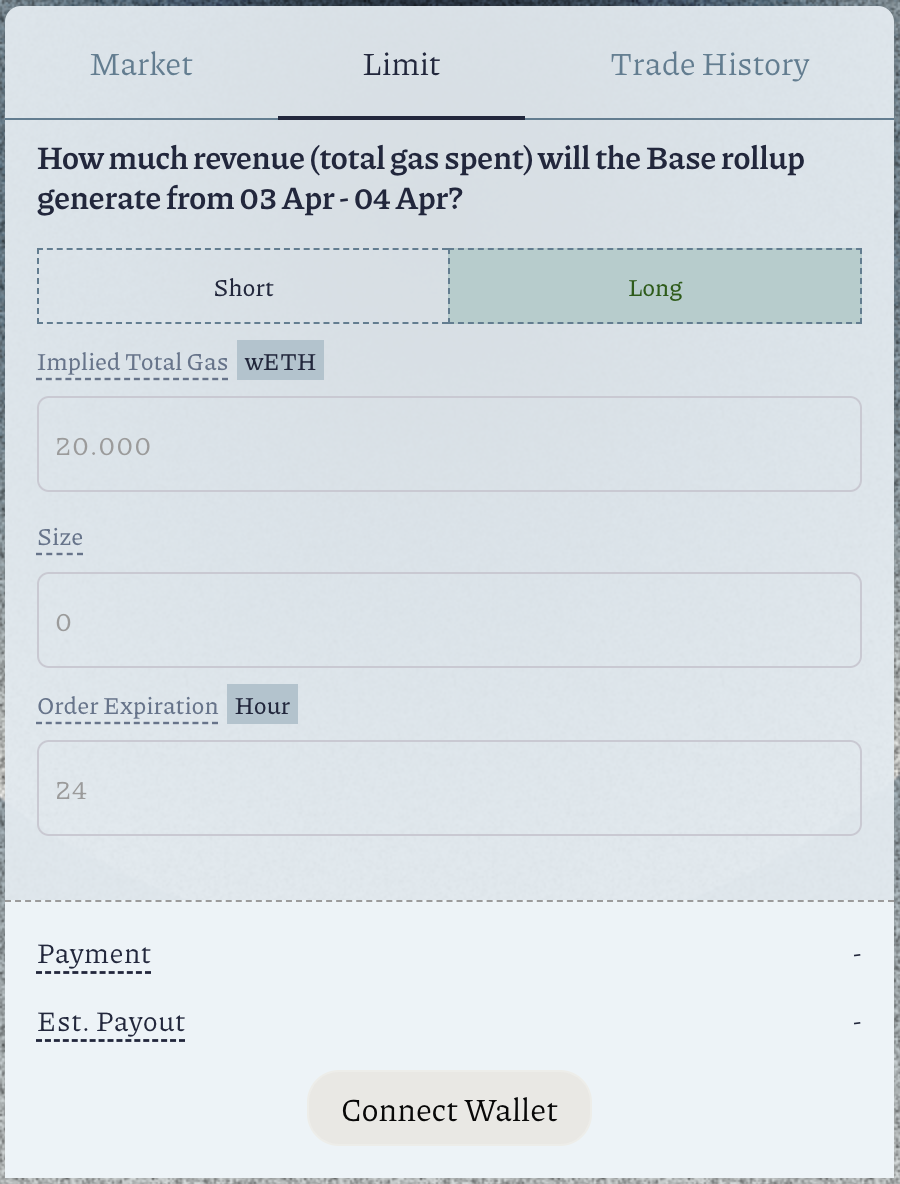
Create a Long Order
If you've decided to Short
- Navigate to "Create Order" and "Open a Sell Position"
- Input
size
Based on your risk appetite, input a value insizethat best reflects that. The minimum size is 1. The larger the value, the bigger your risk appetite. - Input
Implied Total Gas
Based on your research of onchain events, input a value inImplied Total Gas. For example, the currentImplied Total Gasis 200 ETH. You have determined that the finalTotal Base Revenuewill decrease and land at 100 ETH. The best range of values to input here will be 101 - 199 ETH.
Recall that you will only profit the difference between yourImplied Total Gas and final Total Base Revenue if the latter is lower.
- Refer to
Best bid/ask
The aim here is to ensure that your order'sImplied Total Gasis slightly lower than theBest Aski.e. yourImplied Total Gas<Best Ask - Input
Expiration
This is the number of hours you'd like your order to remain on the orderbook. The longer the duration, the more likely your order will be seen.
Note: It is free to create your own order, but if you decide to cancel your order before the expiration, you would have to cover the cost for gas.

Create a Short Order
Voilà! Welcome to Alkimiya, Trader!
This journey is not one to be taken alone.
Flaunt your knowledge and earn rewards!
Updated 7 months ago
